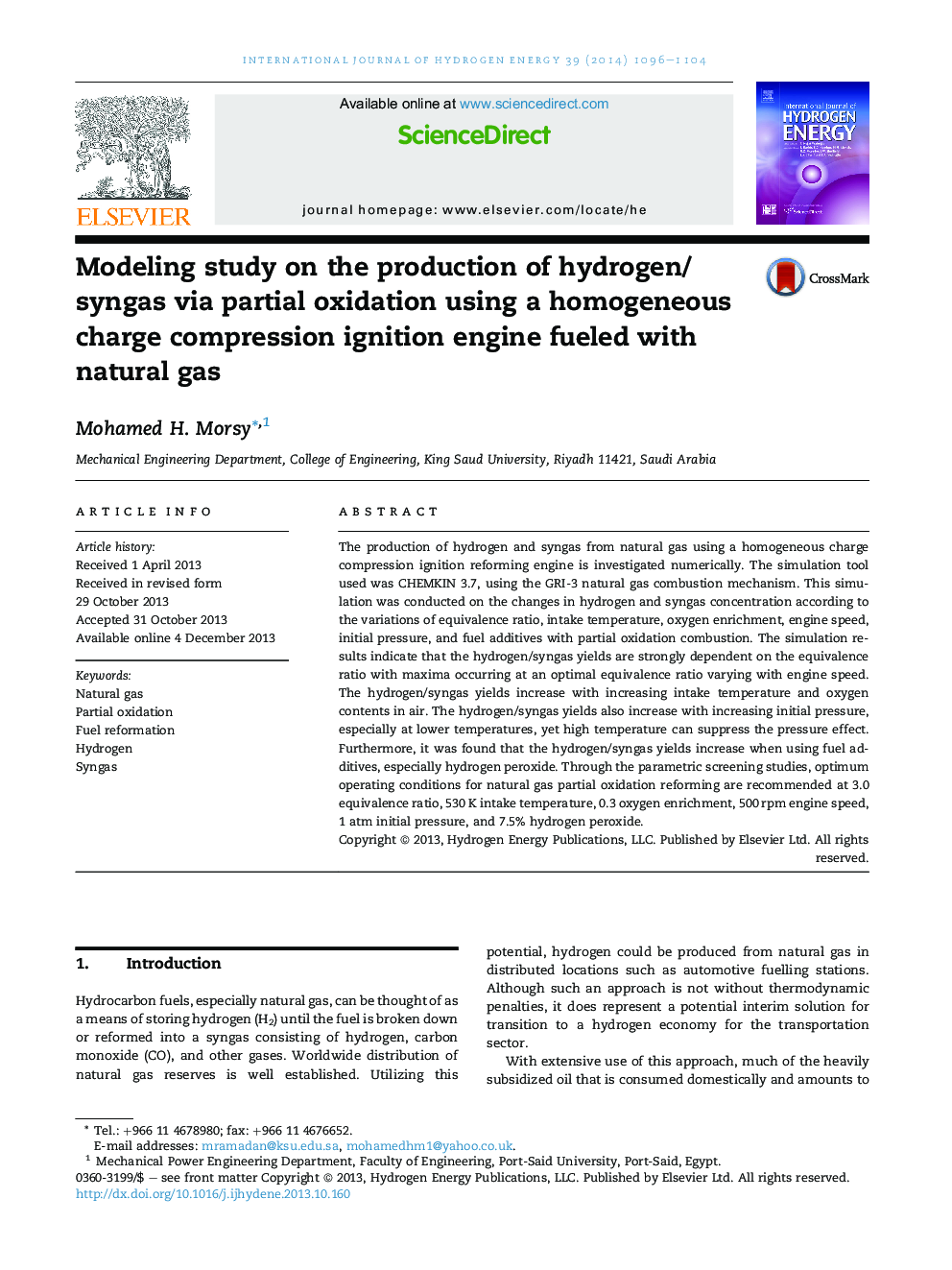| Article ID | Journal | Published Year | Pages | File Type |
|---|---|---|---|---|
| 1276557 | International Journal of Hydrogen Energy | 2014 | 9 Pages |
•Hydrogen and syngas yields are increased along with the increase of equivalence ratio.•Hydrogen and syngas yield is increased as the intake temperature is increased.•The decrease in engine speed resulted in the increase of hydrogen/syngas production.•Higher initial pressure is effective in increasing the hydrogen/syngas yield.•Fuel additives such as H2O2 increases the hydrogen/syngas yield.
The production of hydrogen and syngas from natural gas using a homogeneous charge compression ignition reforming engine is investigated numerically. The simulation tool used was CHEMKIN 3.7, using the GRI-3 natural gas combustion mechanism. This simulation was conducted on the changes in hydrogen and syngas concentration according to the variations of equivalence ratio, intake temperature, oxygen enrichment, engine speed, initial pressure, and fuel additives with partial oxidation combustion. The simulation results indicate that the hydrogen/syngas yields are strongly dependent on the equivalence ratio with maxima occurring at an optimal equivalence ratio varying with engine speed. The hydrogen/syngas yields increase with increasing intake temperature and oxygen contents in air. The hydrogen/syngas yields also increase with increasing initial pressure, especially at lower temperatures, yet high temperature can suppress the pressure effect. Furthermore, it was found that the hydrogen/syngas yields increase when using fuel additives, especially hydrogen peroxide. Through the parametric screening studies, optimum operating conditions for natural gas partial oxidation reforming are recommended at 3.0 equivalence ratio, 530 K intake temperature, 0.3 oxygen enrichment, 500 rpm engine speed, 1 atm initial pressure, and 7.5% hydrogen peroxide.
